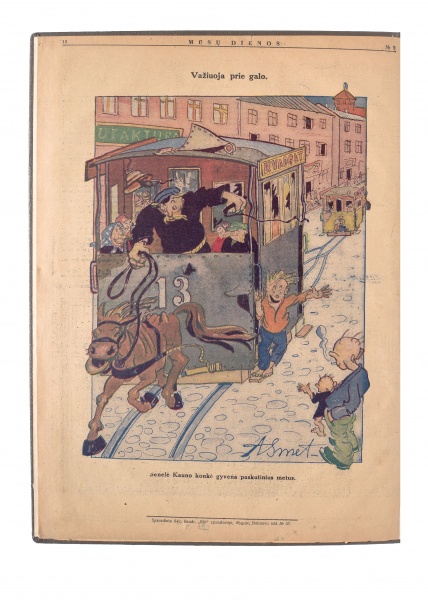During Kaunas’ first few years as the new capital, its temporary status was an obstacle to new construction while the hope of regaining Vilnius was still strong. There were other problems too: it did not have a mains water supply, sewerage or other amenities. The condition of the city at that time was described vividly by the architect and engineer Antanas Jokimas: ‘In 1922, Kaunas was no different to any other garrison town deep in the Russian provinces in prewar times: ubiquitous wooden pavements, primitive bumpy cobbles, a lot of unpaved streets, even in the city centre, the exteriors of houses neglected for many years, serious decay, broken and rickety fences, clouds of dust in the streets, and the smell of inner courtyards. Cows and pigs freely roaming the streets, even on Laisvės Avenue, was not a rare occurrence’ (Antanas Jokimas, ‘On the Construction of the City of Kaunas’, Technika ir ūkis, 1940, No 3, p. 43).
The modernisation of the interim capital began when the realisation dawned in the middle of the 1920s that it would take time to get Vilnius back: sewerage and mains water were installed, the pavements and streets were improved, and on 15 April 1929, the popular horse-drawn tram, the konkė, went on its last trip. A huge crowd of people gathered to bid farewell to this 19th-century relic that had been operating for four decades. ‘The funeral of the konkė’ was seen as a symbolic move towards modernisation. A cartoon by Adomas Smetona (1901–1942) shows one of the popular subjects of the day, the last years of the konkė. The horse-drawn wagon operated on tracks between the railway station and Town Hall Square, until the ancient vehicle was replaced by buses and cabs.
Text authors Dovilė Barcytė and Ieva Burbaitė
Source: Law firm Valiunas Ellex art album
KAUNAS–VILNIUS / 1918–1945 (2021). Compilers and text authors Dovilė Barcytė and Ieva Burbaitė




